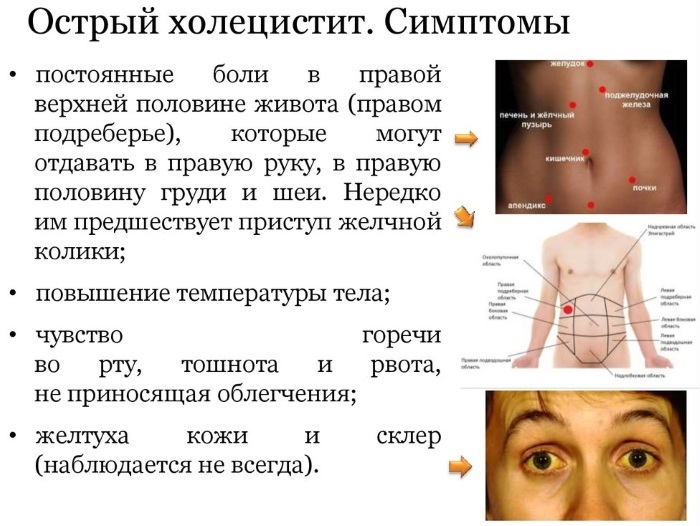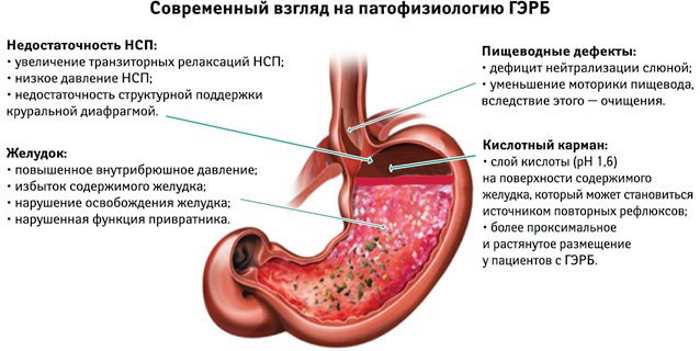The human body lives a huge number of bacteria, some of which are necessary for biological processes. Dysbiosis, or intestinal dysbiosis - upset the balance of bacteria in which there is disruption of the functioning of all organs and systems.
This condition is not an independent disease, and is classified as a clinical syndrome. Such a state is never a primary, it is a consequence of other disorders.
The content of the article:
- 1 Causes of dysbiosis in adults and children
- 2 Classification
- 3 symptoms
- 4 The severity of the disease and clinical features
- 5 possible complications
- 6 Diagnostics
- 7 Main methods of treatment
- 8 People's treatment
- 9 Features food in the intestinal dysbiosis
- 10 Video of the intestinal dysbiosis
Causes of dysbiosis in adults and children
intestinal dysbiosis - it is a disorder that can have dozens of different reasons. Identify and eliminate the pathology can only be a specialist after finding out the factors that led to this.
The most common causes of dysbiosis are described below?
- Taking potent antibiotics. Even a short course can lead to imbalance, especially in the presence of other predisposing factors.

- Chronic or acute inflammation of the digestive system (gastritis, colitis, pancreatitis, cholecystitis and others).
- Disturbed diet. The lack of balance or abuse dangerous to health of the digestive tract, food.
- Surgical intervention. Especially the quality and balance of microflora in the intestines affect the operation carried out on the organs of the digestive system.
- The sharp decline in immune status as a result of the transferred acute and chronic diseases.
- Bad habits - alcohol abuse, narcotic substances.
- Foodborne illness (poisoning).
In addition to the above causes disruption of microflora may cause a variety of medical procedures and interventions (enema and others), the fascination with unconventional ways of purification of the body, consumption of medications for weight loss with laxative effects. Much less likely to be diagnosed dysbiosis caused by exposure to chemicals at work.
Classification
intestinal dysbiosis - it is a disorder that can take various forms and differ in etiology, symptomatology and type. Various types of dysbacteriosis different clinical manifestations, have characteristics and different causes. Types dysbacteriosis, depending on the reasons described in the table.
| The form of dysbiosis | Description |
| Primary, idiopathic |
|
| Age and gerontology dysbiosis |
|
| medical dysbiosis |
|
| Professional form of dysbiosis |
|
| Food form of dysbiosis |
|
| Secondary dysbiosis in patients |
|
| Seasonal violation of microflora |
|
intestinal dysbiosis vary depending on the flow characteristics.
Below are the types of dysbiosis, characterized by clinical manifestations:
- Compensated an imbalance of intestinal microflora - a disorder does not manifest itself by any symptoms. Compensated dysbiosis does not affect the functioning of the organs of the digestive system, although in the long term can lead to complications.
- subcompensated dysbiosis form differs mild clinical picture, periodic exacerbations. It does not significantly affect the digestive system and the human body as a whole.
-
decompensated dysbiosis characterized by severe, pronounced clinical picture. Most often occurs in acute form and requires emergency treatment because the high risk of dangerous complications.

intestinal dysbiosis - it is a condition in which due to an imbalance of the normal microflora, evolving pathogens.
According to the type of pathogenic bacteria are the following forms of dysbiosis:
- staphylococcal form;
- yeast;
- Proteaceae;
- mixed.
Classification dysbiosis need for a more accurate diagnosis and selection of effective therapeutic methods in view of specificity, severity and causes imbalance.
symptoms
intestinal dysbiosis develops slowly, for a long time proceeds without pronounced symptoms. In the latent phase may appear only minor clinical signs in violation of a healthy diet. The diagnosis is always taken into account the severity of symptoms and their specificity.
At different stages of development of microflora imbalance, there is the following set of symptoms:
- nausea;

- diarrhea;
- change the color and smell of the chair;
- mucus and blood in the stool;
- pain and abdominal cramps;
- flatulence;
- pale skin;
- dehydration of various degrees of severity.
Severe dysbiosis often accompanied by in the immune system, frequent allergic skin reactions, anemia. In severe cases, the expressed intoxication syndrome accession of pathogenic microflora.
The severity of the disease and clinical features
In the diagnosis of symptoms into account, which determines the type of dyspepsia caused by the violation of the microflora in the intestines. According to the type of dyspepsia isolated putrefactive and fermentative form of intestinal dysbiosis. According to the severity of the clinical picture are 4 severity.
Differences each degree shown in the table below:
| Grade I | Grade II | Grade III | IV degree |
|
|
|
|
The severity is determined during diagnosis and considered when selecting therapeutic methods, as well as the symptomatic treatment assignment.
possible complications
Dysbiosis is not dangerous to life or health in cases where the proceeds in mild form. At this stage, with proper nutrition are all easy to fix. But, in the case of the rapid progression of the disease can be attached additional complications.
What is fraught with the development of dysbiosis - a list of further major complications:
- The development of a variety of intestinal infections due to the inability of the body to resist pathogens.

Intestinal dysbiosis may cause penetration of the infection into the body - Malabsorption of vitamins and minerals in the intestine.
- A strong reduction of the immune status, frequent incidence.
- The development of food allergies, skin reactions, rash, itching.
- The spread of intestinal infections of other organs of the digestive system.
- Anemia due to poor absorption of iron compounds, ingested with food.
- Activation of fungal infections - Candida, athlete's foot and others.
- Violation of the endocrine system, hormonal imbalance.
Dysbiosis may lead to the development of life-threatening conditions - peritonitis or sepsis. In such cases, the temperature rises sharply, sharp pain and severe intoxication. With the development of such symptoms should seek emergency to a medical facility or call an ambulance, because no treatment is fraught with fatal consequences.
Diagnostics
At the first appointment to inspect and collect oral, subjective complaints of the patient. Plan further diagnosis developed individually with the received data in the first stage and condition of the patient.
In determining the severity and type of dysbiosis using the following diagnostic techniques:
- bacteriological and biochemical analysis of feces;
- complete blood count (to determine the basic health indicators);
- gastroscopy;
- chromatography;
- MRI;
- sigmoidoscopy;
- barium enema;
- colonoscopy.

Diagnosis is made initially and at various stages of treatment to monitor the positive dynamics and opportunities in a timely manner to adjust the selected therapeutic course.
Main methods of treatment
In the treatment of intestinal dysbiosis used mainly conservative method. In determining the extent of damage individually selected therapeutic course.
The main goals of therapy:
- intensify the elimination of pathogenic microorganisms;
- restoring the balance of healthy microflora;
- elimination of unpleasant symptoms;
- blocking reasons that provoked the imbalance.
Drugs used in the treatment groups 3 and auxiliaries to restore the overall performance of the organism.
The main elements of pharmacotherapy:
- antibiotics, antiseptics and antifungal agents (stop the development of pathogenic microorganisms);
-
prebioticsandprobiotics (Drugs needed to restore the balance of microflora);

- symptomatic drugs (Antispasmodics, chelators, antidiarrheals).
Antibiotics, antiseptics and antifungal agents are selected after bacteriological examination and determine the type of active pathogens.
In clinical practice, most of these drugs are used:
- metronidazole;
- erythromycin;
- ceftriaxone;
- Fluconazole.
From the group of prebiotics and probiotics most effective recognized the following drugs:
- Linex;
- Bifidumbacterin;
- Lactobacterin;
- Normase;
- Hilak forte.
They restore the quality and quantity of healthy microflora.
Among symptomatic drugs medical practice, involve the following:
- Meteospazmil, Drotaverine (removal spasms);
- Activated charcoal, smectite (to eliminate toxins and diarrhea);
- Pancreatin (enzymatic preparation for the normalization of digestion).
In the case of use of hypovitaminosis and anemia of vitamin-mineral supplements and iron supplements. These drugs are selected individually, depending on which ones matter the body is lacking.
intestinal dysbiosis - a disease of the individual, so the purpose of this treatment can give a doctor. Self-medication can only worsen the condition of the patient and lead to disease progression.
People's treatment
Intestinal dysbiosis - it is a disorder that can be corrected without drugs. Below are the most popular techniques for people restoration of intestinal microflora:
- Milk serum. Take 150 ml three times a day for 2 weeks.
- Homemade yogurt, cooked with lactobacilli and bifidobacteria (finished leaven). Taking thrice per day together with the main meal.
- People's method of treatment involves the use of dysbiosis kvass finished drink with a minimum amount of sugar. Take a glass of an empty stomach and an additional 3 cups during the day, after 30 minutes. postprandial.
- To eliminate the use of diarrhea congee. In 1 liter of water to boil for 20 minutes. 2 tbsp. l. rice. Decanted liquid, and taking 50 ml three times per day.
- Kissel oatmeal taking 200 ml, 2 times a day to recover the microflora, elimination of symptoms and diarrhea.

Folk methods before use should be discussed with your doctor. Some funds can not be combined with drug therapy, therefore, need advice.
Features food in the intestinal dysbiosis
The basis of success in the treatment of dysbiosis - a properly selected diet. In most cases, correct the situation can only by changing the menu, but will need some time to fully recover.
The basic rules of supply at dysbacteriosis are as follows:
- It is necessary to immediately establish the fractional and frequent meals, strictly according to the regime - 4-5 administrations per day.

- Immediately should avoid acidic, spicy, salty, fried and canned products.
- The diet should include cereals - oats, wheat, rice.
- Be sure to add more vegetables on the menu.
- Should give preference only lean meat and fish.
- It is necessary to abandon the consumption of whole milk and sweets - these products provoke the development of pathogenic microflora.
- Be sure to include in the diet of fermented milk products - yogurt, kefir. You can not eat sweet prepared with yogurt and preservatives citric acid.
- It should be steamed, boil thoroughly or baked products.
- Any products, after which use there is severe discomfort, should be deleted.
The diet should be at a dysbacteriosis only dietary products. You can not eat semi-finished snacks and other harmful types of food. The expansion of the diet should consult a doctor. In the case of the accession of other gastrointestinal diseases diet selected individually.
Encounter with intestinal dysbiosis may everyone. It is important to know when to recognize this intestinal disorder and to do his treatment immediately. Taking into account the possible negative consequences of the disease, should promptly see a doctor for diagnosis and restore balance.
Registration of the article: Mila Friedan
Video of the intestinal dysbiosis
What is intestinal dysbiosis, and how to treat it tells Elena Malysheva:



